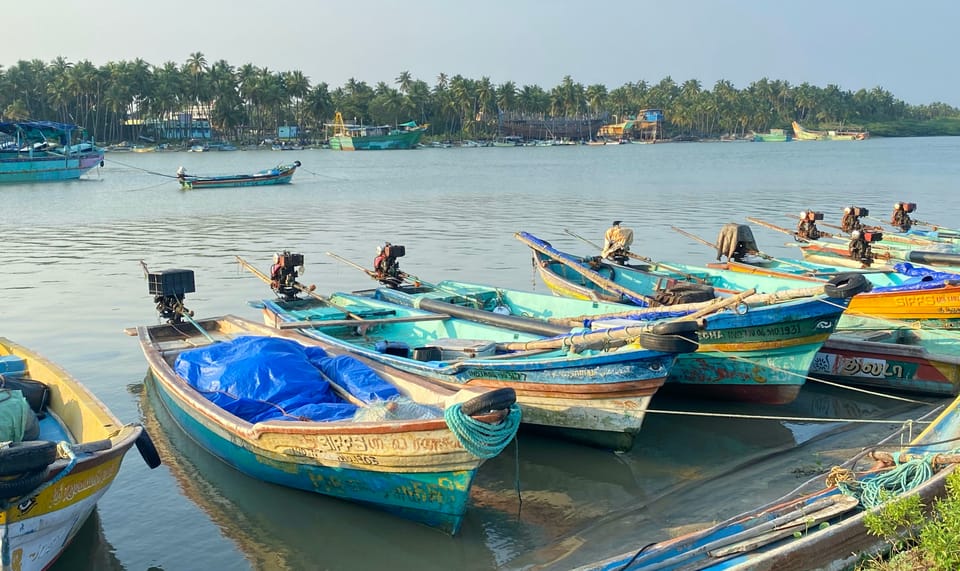#9 Harbours of transformation

This month, we bring to you a series on how the modernisation of harbours in India is changing the lives of fishers in relation to the politics of their livelihood, and overall well-being. Written by social science researchers from the University of Amsterdam, the series will zoom into the harbours at Cuddalore, a district in the southern state of Tamil Nadu.
In the last decade or so, India's existing harbours have gone through a face-lift, and newer ones are coming up. Under the Coastal Community Development subset of the Sagarmala Project, a national port-led development model launched in September 2015 by the Bharatiya Janata Party, there are about 37 fisheries harbour development projects worth INR 6,500 crore. While some are undergoing an upgradation, some are being developed from scratch. The projects are funded in part by the Fisheries and Aquaculture Infrastructure Development Fund (FIDF), the Sagarmala scheme, the Pradhan Mantri Matsya Yojana (PMMSY) Scheme and the respective state governments.
Anatomy of a harbour
What is a harbour? A harbour is, by definition, a place of refuge for boats and ships. It is a part of a body of water along the shore, deep enough, and protected enough, for anchoring and docking boats. It can be natural, or man-made. A harbour has a jetty, a structure of stone or wood jutting out into the sea for getting off and on the boats as well as to land the fish. It has a raised platform, usually covered, where fish is sorted and auctioned. It has ice-plants. It has a corner for mending of fishing nets. Sometimes, it has a dedicated ground for drying fish. It also has a market like structure for selling fish. The harbour is usually abuzz with people 4am onwards – fishers, fishworkers, traders, ice-truck carriers, fish-sellers.
What does modernisation of a harbour look like? Modernisation and upgradation could look like the expansion of the harbour to allow more boats to park, establishment of air-conditioned auction halls, fish dressing units, packaging units, construction of internal roads, loading & unloading platforms, cold storage units, multi-level car parking, retail markets etc.
Fisher well-being
Socio-economic well-being is one of the core missions of the Coastal Community Development subset of the Sagarmala Project. Have these harbour upgradations resulted in a better situation for fishers who use them? Three social researchers from the University of Amsterdam have done a study across three different harbours in the Cuddalore district of Tamil Nadu. Situated on the Coromandel coast, the 58 kilometre long Cuddalore coastline with its 49 fishing villages and population of 47,000 fisherfolk has witnessed a 'rapidly transforming socio-ecological system interconnected by individual, institutional, environment and policy dimensions.' Over the course of the month, the researchers, in their own words, as guest authors, will be writing their perspectives, reflecting on the changing nature of capture fisheries, its impact on livelihood, and how the transforming nature of harbour development is impacting the well-being of the fishers. We are quite excited to share these stories with you. Stay tuned!
